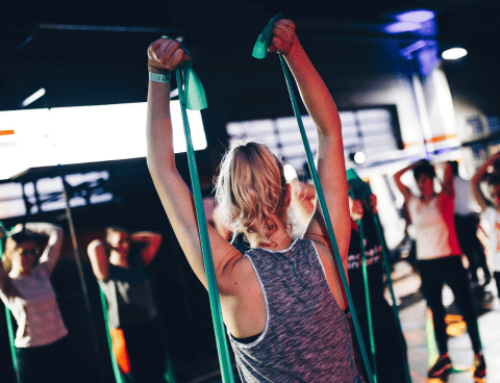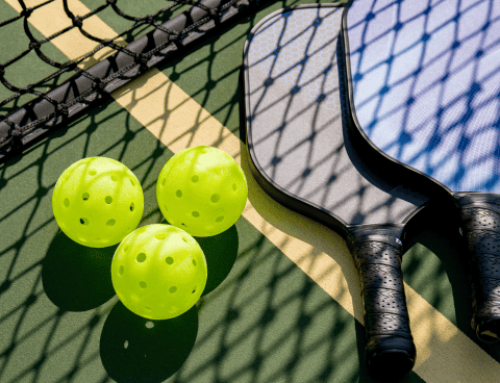Does Instability Training Make Hockey Players Better?
In our society, we’re constantly looking for the next big thing, something that will spark our interest and really get us excited. We constantly crave new information and seek out new devices. Well, the same idea holds true in the hockey training world.
Over the past few years, instability training has really taken off in hockey workouts. The use of wobble boards, BOSU balls and physioballs is now commonplace among hockey players as they train for their season. (Learn about functional training.)
But do these instability devices really help a hockey player’s athletic ability? Or are they just the flavor of the month? If I were to choose an answer, I’d go with flavor of the month, based on the work of a respected trainer named Eric Cressey.
In his book, The Truth About Unstable Surface Training, Cressey discusses the origins of unstable surface training and how it is beneficial in clinical settings to reduce ankle instability. His study, published in 2007 in the Journal of Strength and Conditioning Research, concluded that replacing as little as two to three percent of total training volume with unstable surface training interfered with improvements in peak power, sprinting speed and agility in soccer players.
Obviously a soccer player and a hockey player are hard to compare, since a foot on a flat surface is different from a skate on ice. But the use of unstable training surfaces is not specific to the sport of hockey, or to any sport really.
Think about a hockey player driving to the net with the puck and being checked by a defenseman. The force applied to his body is much higher than the stable surface he’s on. If that isn’t enough, when was the last time you saw the ice move or wobble while you skated or watched a game on TV? Never.
If you want to incorporate instability training into your workouts, consider using exercises that involve the unstable force being applied to the upper body instead of the lower body. These types of exercises are much more relevant to the sport of hockey.
Try these upper-body exercises to add instability to your training. They will make you a better hockey player.
Suitcase Deadlift
With this exercise, you go through the same motion as a regular Deadlift, except you hold a dumbbell at your side in one hand. This creates an unstable situation, in which you have to flex your core on the opposite side of your body to remain stable.
Sets/Reps: 4×6 each side
Single-Arm Push Press
This exercise is like the Dumbbell Shoulder Press, except you stand up and use only one arm. Use your legs to give yourself a little nudge before you push the dumbbell straight up. The exercise also creates instability, since one side of the body has to work to keep the whole body stable.
Sets/Reps: 3-4×6-8 each arm
Single-Arm Dumbbell Press
Perform this exercise like a regular Dumbbell Press, except in alternating fashion. The opposite side of your body has to work to keep you stable in place while you perform the press.
Sets/Reps: 3×8-10 each arm
Pallof Cable Press
Stand sideways to the cable machine holding the handle with both hands directly in front. Pull the handle toward you and into your chest, then push out so that you end up in the starting position. This exercise is one of the best for strengthening the muscles that prevent rotation and stabilize your core, key for maintaining body position when checked by an opponent.
Sets/Reps: 3×10 each side
For more hockey training information, click here.
Photo: drive.ca
RECOMMENDED FOR YOU
MOST POPULAR
Does Instability Training Make Hockey Players Better?
In our society, we’re constantly looking for the next big thing, something that will spark our interest and really get us excited. We constantly crave new information and seek out new devices. Well, the same idea holds true in the hockey training world.
Over the past few years, instability training has really taken off in hockey workouts. The use of wobble boards, BOSU balls and physioballs is now commonplace among hockey players as they train for their season. (Learn about functional training.)
But do these instability devices really help a hockey player’s athletic ability? Or are they just the flavor of the month? If I were to choose an answer, I’d go with flavor of the month, based on the work of a respected trainer named Eric Cressey.
In his book, The Truth About Unstable Surface Training, Cressey discusses the origins of unstable surface training and how it is beneficial in clinical settings to reduce ankle instability. His study, published in 2007 in the Journal of Strength and Conditioning Research, concluded that replacing as little as two to three percent of total training volume with unstable surface training interfered with improvements in peak power, sprinting speed and agility in soccer players.
Obviously a soccer player and a hockey player are hard to compare, since a foot on a flat surface is different from a skate on ice. But the use of unstable training surfaces is not specific to the sport of hockey, or to any sport really.
Think about a hockey player driving to the net with the puck and being checked by a defenseman. The force applied to his body is much higher than the stable surface he’s on. If that isn’t enough, when was the last time you saw the ice move or wobble while you skated or watched a game on TV? Never.
If you want to incorporate instability training into your workouts, consider using exercises that involve the unstable force being applied to the upper body instead of the lower body. These types of exercises are much more relevant to the sport of hockey.
Try these upper-body exercises to add instability to your training. They will make you a better hockey player.
Suitcase Deadlift
With this exercise, you go through the same motion as a regular Deadlift, except you hold a dumbbell at your side in one hand. This creates an unstable situation, in which you have to flex your core on the opposite side of your body to remain stable.
Sets/Reps: 4×6 each side
Single-Arm Push Press
This exercise is like the Dumbbell Shoulder Press, except you stand up and use only one arm. Use your legs to give yourself a little nudge before you push the dumbbell straight up. The exercise also creates instability, since one side of the body has to work to keep the whole body stable.
Sets/Reps: 3-4×6-8 each arm
Single-Arm Dumbbell Press
Perform this exercise like a regular Dumbbell Press, except in alternating fashion. The opposite side of your body has to work to keep you stable in place while you perform the press.
Sets/Reps: 3×8-10 each arm
Pallof Cable Press
Stand sideways to the cable machine holding the handle with both hands directly in front. Pull the handle toward you and into your chest, then push out so that you end up in the starting position. This exercise is one of the best for strengthening the muscles that prevent rotation and stabilize your core, key for maintaining body position when checked by an opponent.
Sets/Reps: 3×10 each side
For more hockey training information, click here.
Photo: drive.ca












